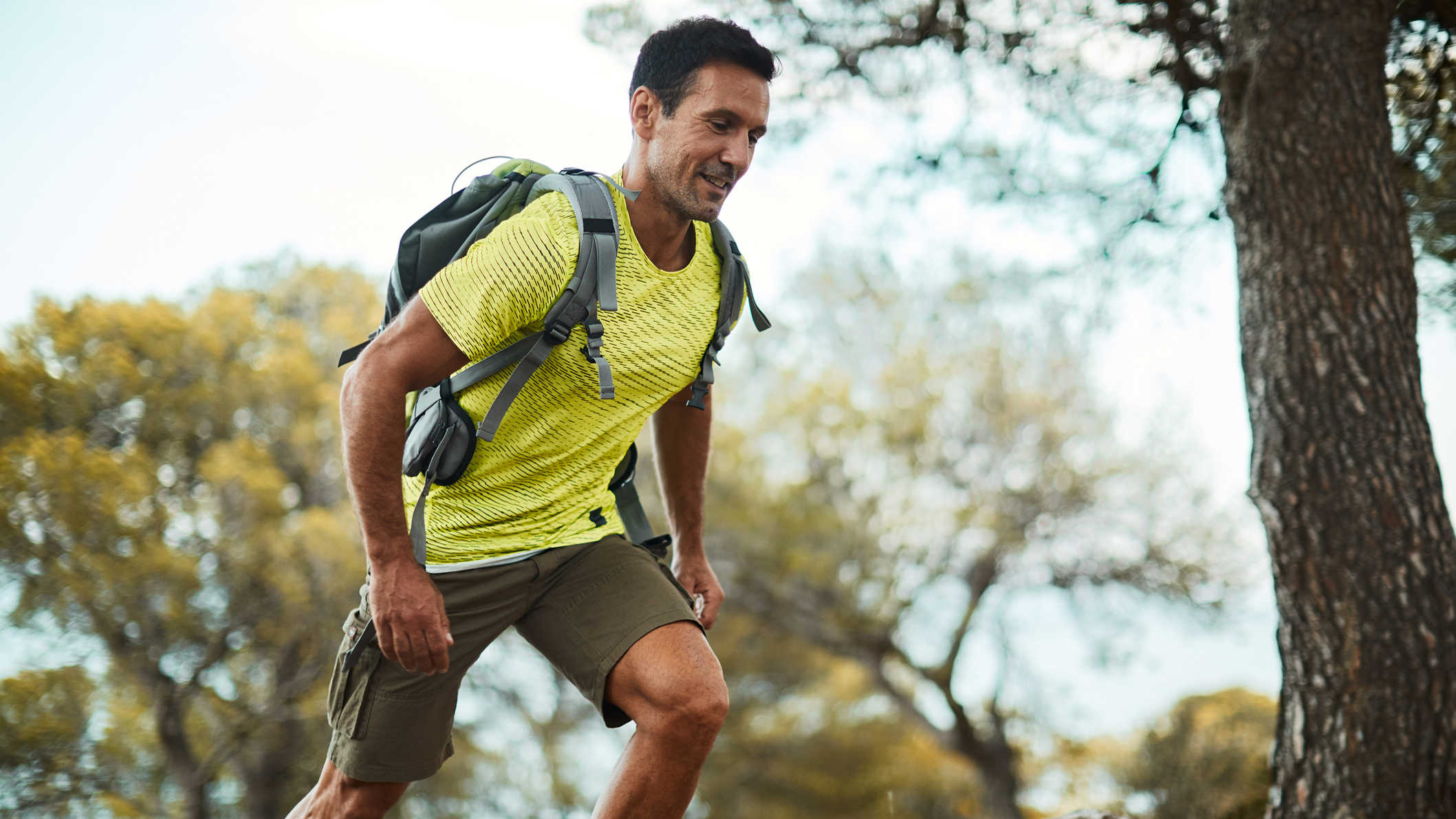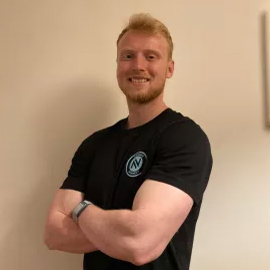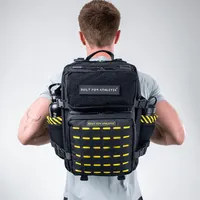This four-move rucking workout will help you build stronger legs and boost your endurance
Rucking can help you build strength, muscle and fitness without a gym membership


Dumbbells, barbells and kettlebells aren't the only training tools you can use to build strength outside of the gym. If you own a backpack or a weighted vest, you can do some rucking.
Rucking involves loading additional weight onto your body and going for a run or fast-paced walk. It's a clever way to turn your daily stroll into an endurance-boosting cardio session.
If you want to use the exercise to build some serious muscle, you could try doing a mini workout in the middle of your hike—like the one outlined below, from CrossFit training platform PRVN Fitness and fitness brand Built For Athletes.
It should take you less than 30 minutes to do, but it will strengthen your legs and give you a little cardio boost.
Built For Athletes Gym Backpack 35L: was $175, now $123 at Built For Athletes
Save $52 This Built For Athletes bag is one of my favorites. It's strong enough to hold weight plates for rucking workouts, and has straps around the chest and waist to stop it bouncing around too much. There's also enough space to hold my gym and work gear on busy days, and plenty of compartments for stashing my various training tools.
How to do the workout

- Walk/run with a backpack for one mile
- Backpack step-ups x21,15, 9
- Backpack squats x21,15, 9
- Backpack lunges x21,15, 9
- Walk/run with a backpack for one mile
This workout consists of a three-move circuit, sandwiched between a pair of one-mile walks or runs. You'll wear the weighted backpack for all exercises and the one-mile runs, although you can adjust the weight between moves to suit your strength and fitness level.
To start, put the backpack on and complete the first mile. When you've finished this, work through three rounds of a circuit comprising backpack step-ups, backpack squats and backpack lunges. In the first round you'll do 21 repetitions of each exercise, in the second you'll lower this to 15, and for the final round do nine of each.
Once all three rounds are complete, set off on your second one-mile walk or run. Once you hit the mile mark, the workout is complete.
Start your week with achievable workout ideas, health tips and wellbeing advice in your inbox.
I used the new Built For Athletes Pro Series Backpack when I gave this workout a go, with the bag load-tested up to 66lb/30kg. But a comfortable rucksack loaded with clothes will also work to make the moves more challenging.
The exercises
Box step-ups
Sets: 3 Reps: 21,15,9
- Wearing the backpack loaded to your chosen weight, stand facing a box, step, bench or similar sturdy surface with your feet shoulder-width apart.
- Step on to the box with one foot. Drive through the heel of this foot to lift your other foot up and on to the box.
- Step down with the first foot, followed by the second. That's one repetition. Alternate the leg you step up with for each repetition.
Coach's cues
"Keep your core engaged for stability, focusing on the muscles you're working with each step; in this case your quads, hamstrings and glutes. Make sure to control your movement and avoid using momentum."
Squats
Sets: 3 Reps: 21,15,9
- Wearing your backpack, stand with your feet shoulder-width apart and your feet facing slightly outwards.
- Push your hips back then lower them towards the ground, as if you were sitting into a chair behind you.
- Bracing your core and keeping your back straight, lower your hips as far as you can towards the ground while maintaining good form.
- When you've lowered your hips as far as they will go, drive through your heels to return to the starting position. That's one repetition.
Coach's cues
"Maintain proper form by keeping your chest up and back straight, ensuring your knees stay in line with your toes, and controlling both the eccentric and concentric [upwards and downwards] portions of the movement."
Lunges
Sets: 3 Reps: 21,15,9
- Stand wearing your backpack with your feet shoulder-width apart.
- Take a step forward with one leg, keeping your chest up. Bend both knees until the knee of your trailing leg touches the floor.
- Push through the heel of your front foot to return to the start position. That's one repetition. Alternate the leg you step forward with for each repetition.
Coach's cues
"Ensure you keep your core engaged, and all portions of the lunge are slow and controlled to avoid losing your balance."
Bonus top tips from PRVN coach Nic Johnston
When you try something for the first time, it can be tempting to do everything quickly. But PRVN coach Nic Johnston advises against this.
"Pacing will be key for this workout as you don't want to exert all your energy on the first run or on the early exercises and leave yourself tired for the remainder," he says.
"You can also scale this workout to your fitness level by lowering or increasing the weights on each movement, or by increasing the rest time—don't alter the rep ranges though."
If you're on the hunt for more ways to train without a gym membership, take a look at our six-move bodyweight workout for beginners, which can help you build strength and muscle at home without any equipment at all.

Harry Bullmore is a Fitness Writer for Fit&Well and its sister site Coach, covering accessible home workouts, strength training session, and yoga routines. He joined the team from Hearst, where he reviewed products for Men's Health, Women's Health, and Runner's World. He is passionate about the physical and mental benefits of exercise, and splits his time between weightlifting, CrossFit, and gymnastics, which he does to build strength, boost his wellbeing, and have fun.
Harry is a NCTJ-qualified journalist, and has written for Vice, Learning Disability Today, and The Argus, where he was a crime, politics, and sports reporter for several UK regional and national newspapers.
